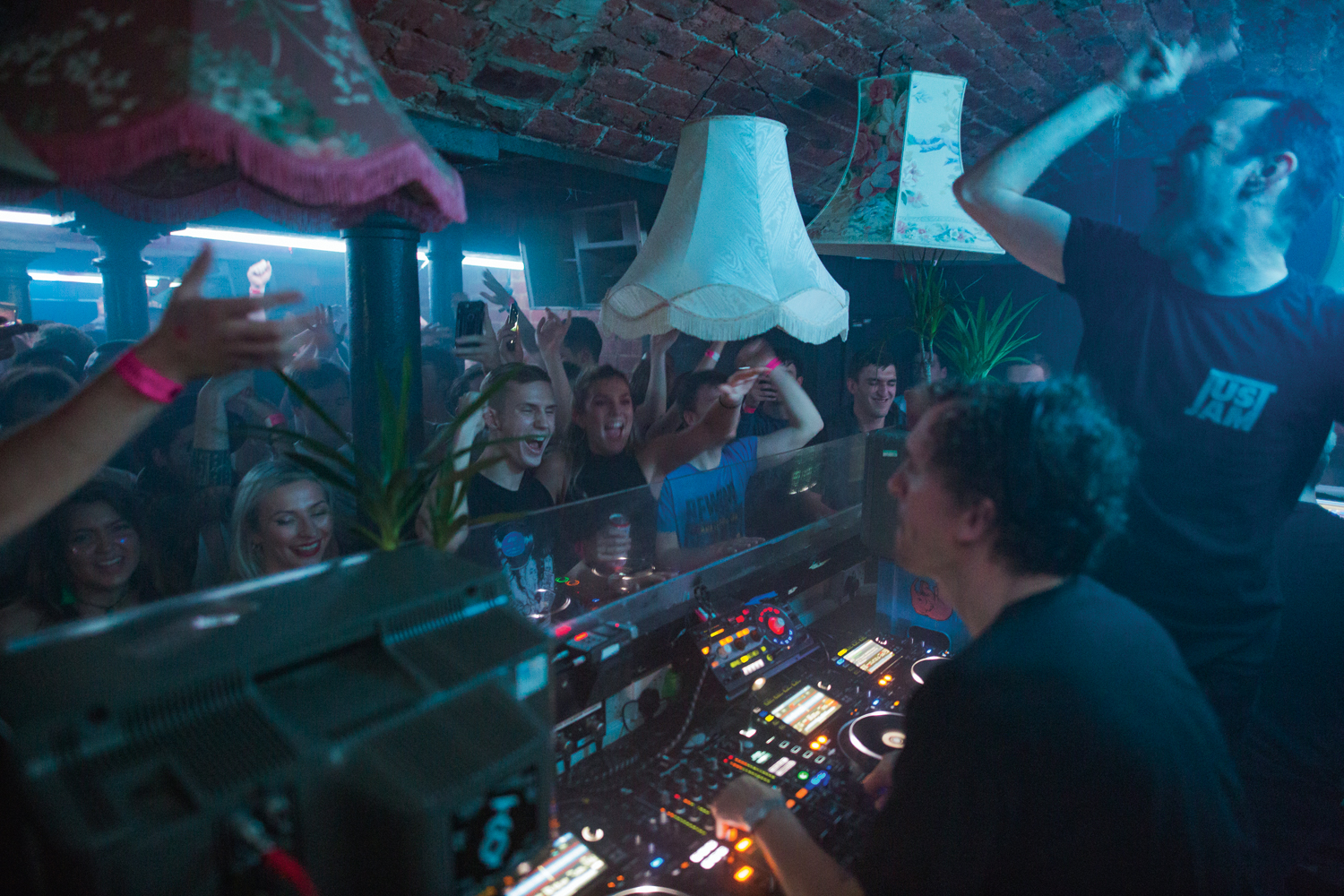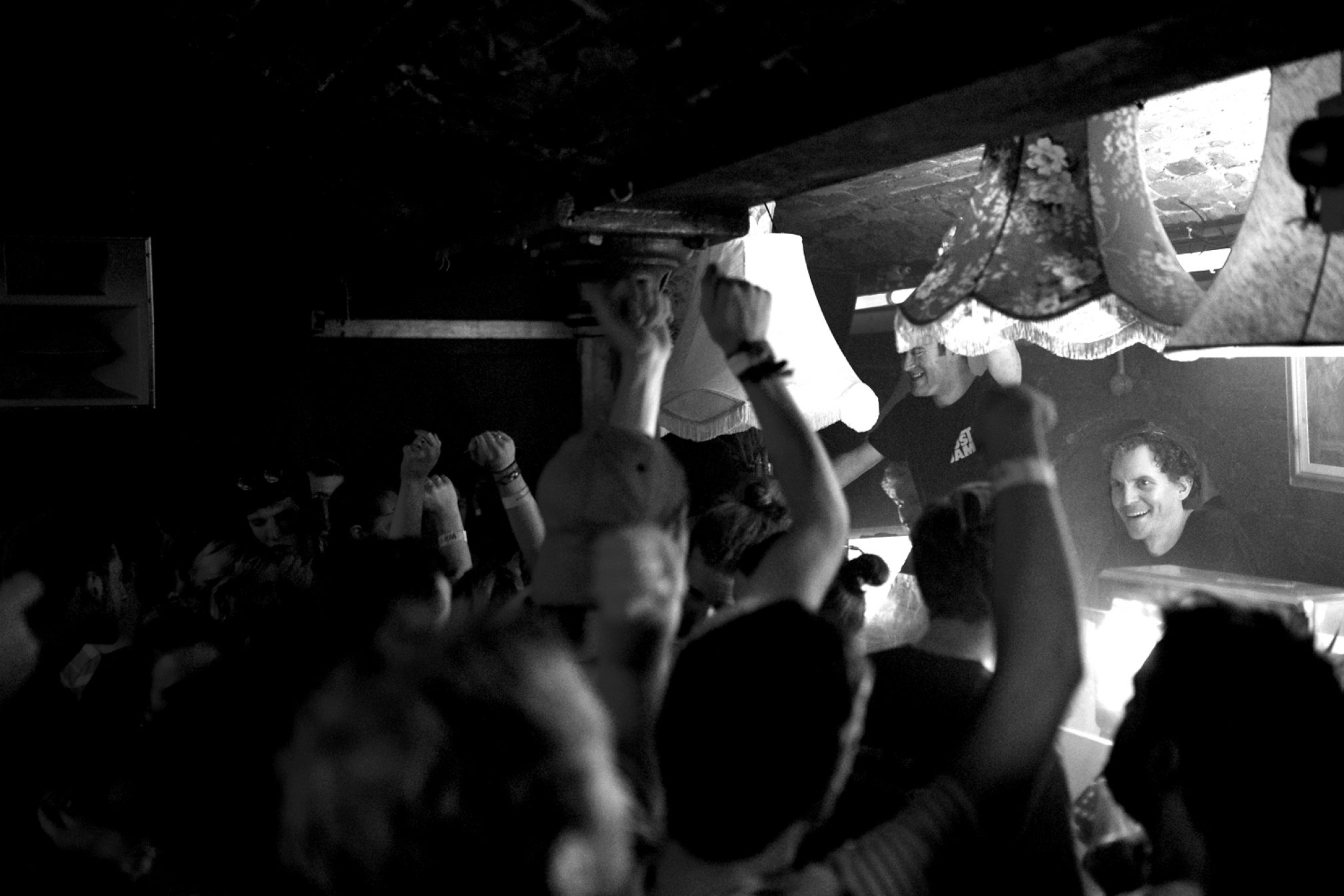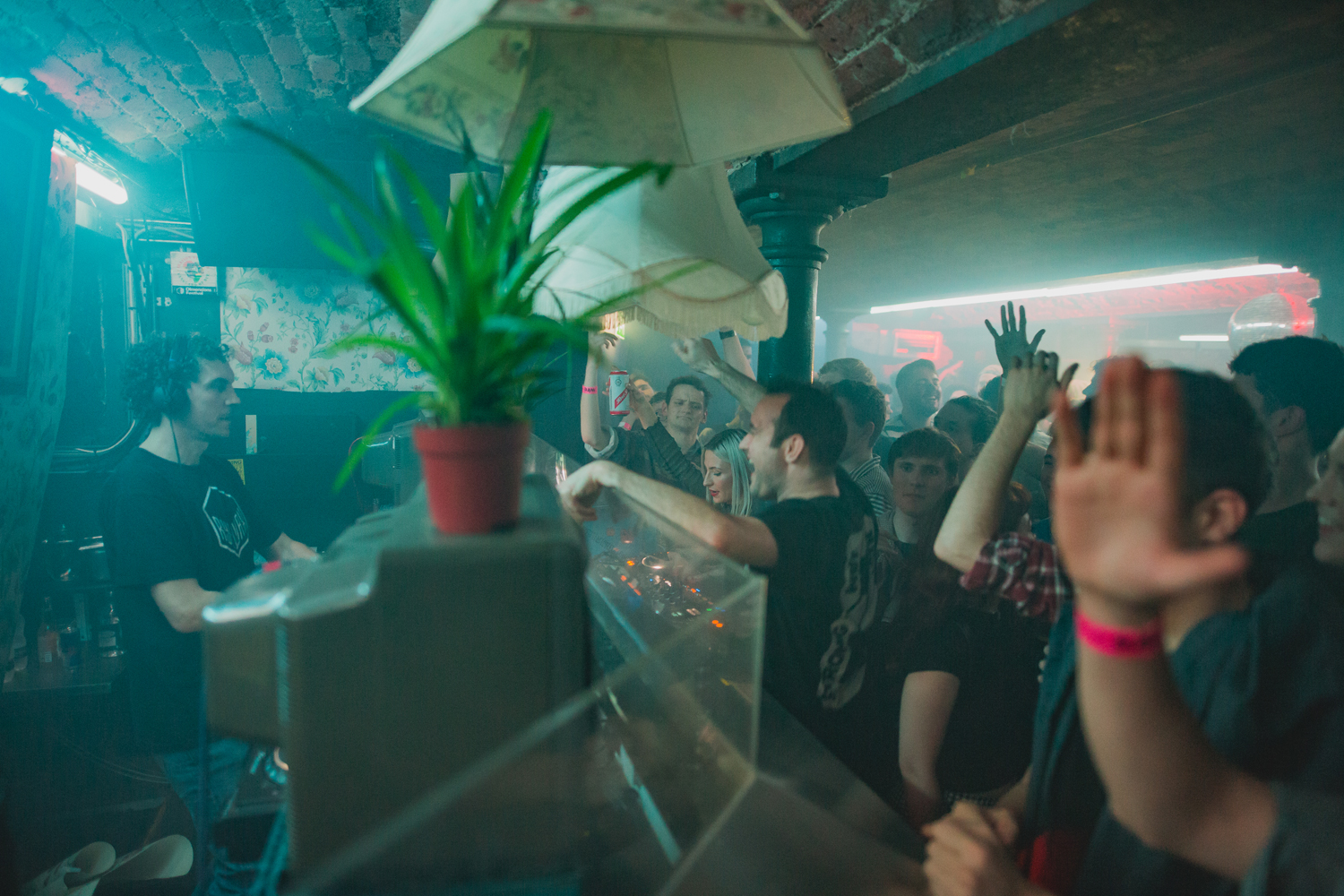 Artists
Artists
Artwork's story reads like he's already lived a thousand dance music lives
Now he's inviting everyone back to his house
“My first gig in Leeds was ridiculous,” remembers Artwork, aka Arthur Smith, as the train rattles north from London. “I was with Magnetic Man and we didn’t really know if we had a fan base there. We’re standing by the side of the stage ready to go on, there’s a massive crowd gathering, and all we can hear is them chanting ‘You’re shit! You’re shit!’” Art’s got one of those old-young faces you sometimes see on rave veterans, the lines and creases of a million late nights animated by the twinkle-eyed glee of someone who’s ready for a million more, and he’s clearly relishing this particular retelling.
“So we’re there, crouched behind a speaker box and thinking, Jesus, we haven’t even played a song yet. I turn to the promoter and say, ‘What have we done? Why do they think we’re shit?’ And he just starts laughing ... Turns out the crowd are chanting ‘Yorkshire’.”
Tonight, as he plays an extended four-hour set in Wire Club, there are no such doubts about his welcome in Yorkshire’s largest city. He’s the only DJ on the bill, and the event has long been sold out. It’s all part of his touring Art’s House project, which turns mid-size venues into an extension of his living room – that is, if his living room had pirouetting lasers alongside pot plants and ancient TVs (to be honest, it just well might). Art’s in his element as the venue fills up: he’s cutting up deep funk records, locking them into loops on the fly and then layering them up with kicks and claps played live from one of the Pioneer effects units he travels with.

As the night goes on and the place packs out, he weaves through gurgling acid, stripped-back techno jackers and house bombs. His own track, the 303 techno monster ‘Let Go Of This Acid’ (the first new record he’s released in quite a few years), gets a predictably massive response. “This is the fifth time I’ve seen him,” shouts a lad in our ear who’s been raving at the front with his mates since arriving. “It’s just always so much fun!” And he’s right – it is pure fun: Art grinning and concentrating, swigging vodka, bobbing up and down, running three or four decks and the effects unit simultaneously, snatching vocals from one track and hi-hats from another, before unleashing monstrous kicks from a third. He’s not so much building and dropping as he is layering a tapestry of vibes on vibes that keeps the crowd in a state of elation. And then, after an hour of this, you realise that for all the joking and self-deprecation and just-an-ordinary-bloke-having-a-party-in-my-living-room image that are part and parcel of the Artwork brand, underpinning it all is one very important fact: Arthur Smith is a really fucking good DJ.
It comes as little surprise, then, that Art’s been obsessed with tunes since he was a child. As we grab some snacks pre-gig, he recounts a life signposted by music – with that early eureka moment coming, as it has done for so many others, when he heard that first inimitable blast of Chicago house.
“I was 12 or 13 and had a radio in my room,” he says. “I used to listen to Andy Kershaw on Radio 1, and one night, when I was dozing off, he said: ‘Now we’re going to go to America, to a new music from Chicago they’re calling house music.’ Then this tune started to play... I was like, ‘what the fuck is that!?’ I jumped out of my bed to press record on the radio. I’d never heard anything like it.”
"She’d bring out a kaleidoscope that we could look at and trip the fuck out on the acid we’d done"
He became an instant convert: as dance music entered a golden age of evolution and innovation, he bought everything from the raw hip hop of Big Daddy Kane to the proto-jungle tearing out of East London. He was aided in his new passion by his parents, with his mum, in particular, deciding to not just ignore the tabloid-fuelled moral panic about rave culture, but actively help her eldest son to get right on one.
“When I was 17, my mum used to drive round the M25 to find us a rave,” he recalls. “Bless her, she’s an old hippy and had done lots of stuff herself. We’d get wankered and come home and she’d make us a cup of tea, then say to us: ‘Look, I’ve got something I bought at a charity shop the other day.’ And she’d bring out something like a kaleidoscope that we could look at and trip the fuck out on the acid we’d done! It was a different kind of household growing up. I wasn’t hiding anything.”
Having comprehensively embraced rave culture, it was a few short steps to working in legendary Croydon record shop Big Apple. The place had one floor selling techno and house, another selling jungle, and then Art came in to run a studio on the top floor, pulling together whatever vibes he was feeling, with little regard for the snobbish genre tribalism that can plague dance music. He was handing out jungle dubplates to DJs like Bailey, while simultaneously putting out much-revered loop-based techno under the name Grain. By the time jungle mutated into speed garage, Art – now in demand for his technical precision in the studio– found himself producing tracks with Danny and Julian of speed garage pioneers 187 Lockdown, “doing so many tunes that we had to change the names we did them under because half the wall in Big Apple was by us”.
Along the way, he helped produce Daniel Bedingfield’s chart-topper ‘Gotta Get Thru This’, while his garage work began to steadily feed back into his techno production as Grain, with the r’n’b vocal snippets that he’d used on 2-step bootlegs being re-purposed into soul-infused techno loops. “At first people were a bit weird about it, then I went to [iconic techno party] Lost and heard Derrick May play one of these Grain tracks. It was incredible, I’ll never forget it. I stood open-mouthed; that was it.”

In hindsight, that fusion of clean techno production with the deep subs and soulful vocals of garage make Art’s eventual involvement in dubstep seem inevitable. He still has a sense of wonder when recounting the unlikely journey he made from underground producer to one-third of the stadium-conquering supergroup Magnetic Man, who played no small part in dubstep’s infiltration of mainstream pop music.
“What a thing it was to be in the room as that whole thing started,” he says, shaking his head in disbelief. “Dubstep started in Big Apple. It doesn’t matter what happened to it; everything goes tits up in the end, or it stays stagnant and never moves. The whole thing was a blur. We wasted so much money: we were getting fuckloads for each show, and walking away with about three grand each. We had two articulated lorries to bring this shit around – all of our lasers and lights, 12 people with us – and I wanted to up it more! It was incredible. We played Pukkelpop and there were seventy or eighty-thousand people watching us. You couldn’t get your head around it.”
Magnetic Man’s tour shenanigans are the stuff of legend. Three likely lads from Croydon found themselves in charge of a pop juggernaut and, from trolling the media in to believing that they were buying Croydon FC to causing stage invasions at festivals in Spain, they milked the experience with the eagerness of kids who know it’s all going to collapse at any second. Art’s recollection of those days comes in jumpy snapshots: monstrously loud gigs, record label cash, some excellent songs and a lot of backstage caning.

With the record label money drying up and the band starting to burn out, Art decided to see if he could do something with his first love of house and disco – although, with typical self-deprecating humour, he reveals he was under no illusions about his fame.
“I thought, I’ve got a bit of a name now – people still didn’t know who I was, though. Even in Magnetic Man, I’d be backstage with Benga and Skream, and people would come up and say: ‘Can we have a picture?’ They’d hand me the phone because they didn’t know who the fuck I was! Anyway, I thought: ‘Fuck it, I’m gonna play the music I love.’”
This turned out to be a shrewd move – as did taking an early risk, the results of which he’s only now starting to reap.
“I was dead on my arse after Magnetic Man. Loefah wanted to book me for a gig at XOYO. The manager, Andy Peyton, didn’t know who I was, and said, ‘Right I’ll give him a chance, he can do Room 2.’ I was like, ‘What, all night?’ And he said, ‘Erm, all night.’ I did all night in Room 2, then did it again and again, and this was when no one else would give me a chance.”
And thus we find ourselves in Art’s House, now a much-loved UK raving institution of its own. Having kicked off this new evolution in a career that’s already spanned decades, it seems only fitting that XOYO should be the first (semi) permanent home Art has found himself in. Set to take over Friday nights at the club for the first quarter of 2018, and having thoroughly tested the concept throughout the country, Art’s now ready to bring his sound to East London. Unsurprisingly for a man who has immersed himself in almost every UK rave sub-genre that matters, he’s always open to new possibilities. “There’s forty years of amazing dance music out there,” he says. “And the best thing you’ve ever heard could be written next week.” He thinks about it, then comes up with the closest thing he has to a manifesto.
“The number one criteria I have is that I want the entire stage to be accessible. It’s about having a party together – come and have a party, we’ll all have a party.” In Art’s House, we are all equal.
Artwork’s XOYO residency takes place until March 30
This feature is taken from the February issue of Mixmag


